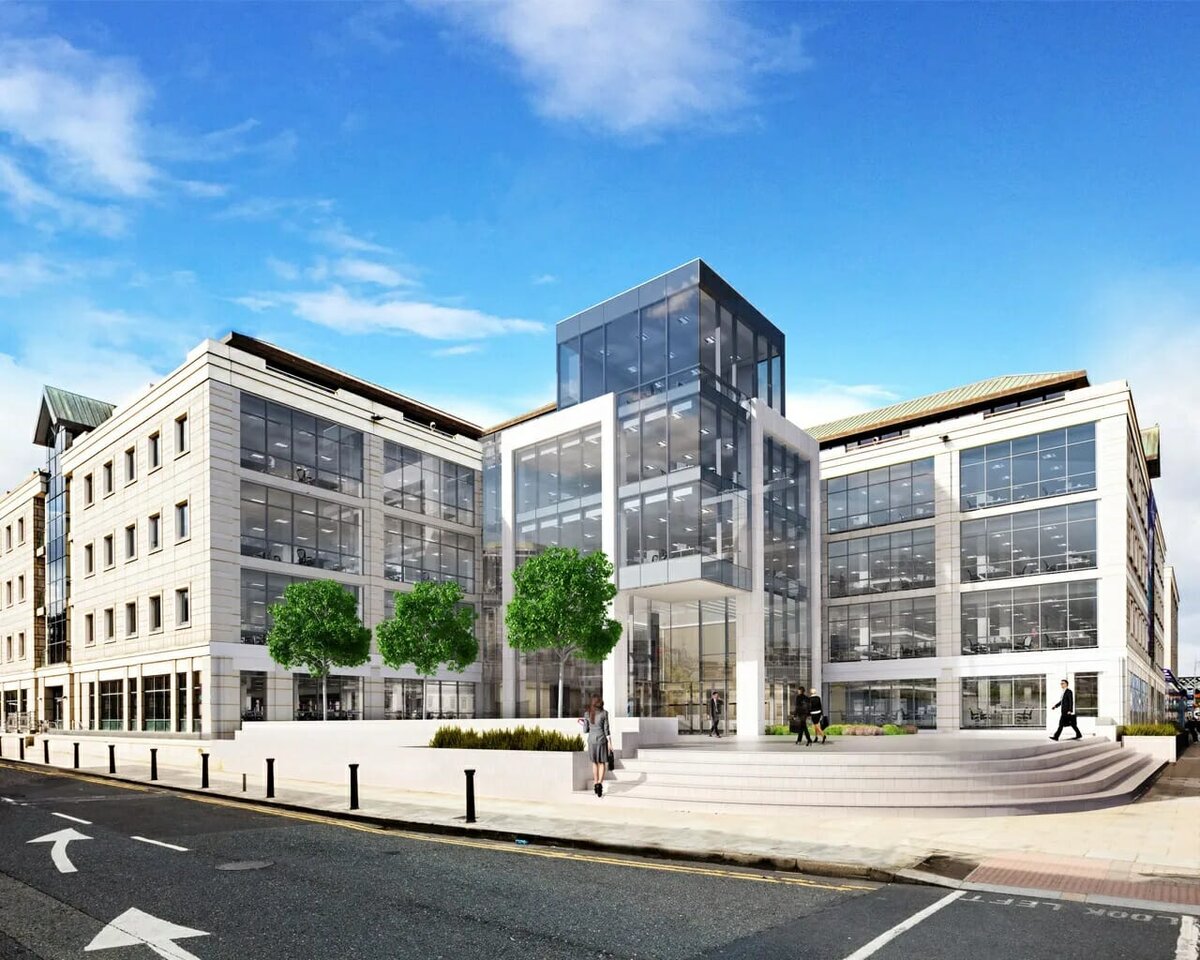
Consultants from climate tech firm, IES, have helped Savills to achieve projected annual energy costs savings of up to €108,000 and carbon savings of up to 302 tonnes of CO2 per year, after being commissioned by the commercial and residential property company to optimise the operational performance of a 14,000m2 office building in George’s Quay, Dublin.
IES Consulting used a monitoring-based commissioning approach and its proprietary iSCAN data analytics platform to improve energy efficiency through the correct operation of the building’s systems, which had previously been upgraded as part of a retrofit project in 2017.
The design strategy for the retrofit targeted several aims, including achieving LEED Platinum and BER A3 ratings, and reducing energy costs by 30% compared to ASHRAE 90.1-2007. The building was equipped with new energy efficient lighting and controls, weather compensation controls for heating, rainwater harvesting, solar panels, and a new mechanical ventilation system with heat recovery.
However, Savills was keen to verify that the desired energy performance was being achieved once the building was in use, with the performance gap between the design intent and actual operational performance of buildings a common issue.
While, by general standards, the building appeared to be performing well, particularly when compared against industry benchmarks such as CIBSE Guide F and TM46, a detailed review of the building’s utilities data and building management systems (BMS) revealed several areas for significant performance improvements.
For example, in one block of the building, it was discovered that the return water temperature set-point on the boilers was too high, meaning that some boilers were running when outside temperatures were relatively moderate. By implementing a quick change to the control set-point in the BMS, Savills was able to start making instant savings.
A review of the data from the outdoor air temperature sensors identified that some of these sensors were receiving direct sunlight which was causing issues with the LPHW temperature set-points, which led to the installation of a weather shield to reduce the exposure to direct sunlight and any potential negative impacts on building operation.
Air handling units, which ensure adequate fresh air is supplied to protect the wellbeing of occupants, are often one of the largest energy consumers in office buildings. With the building occupancy reduced due to the increase in remote working after COVID, IES was able to recommend adjustments that could be made via the BMS to safely reduce overall airflow in line with the number of occupants.
Within just two weeks of operational changes being implemented in early 2021, energy reductions of up to 69% were observed, although some of these savings could be attributed in part to COVID lockdowns.
The electrical usage data for the Landlord meters indicated projected annual savings of up to €94,833 and 143.54 tonnes of CO2 per year. Meanwhile, a decrease in gas usage is predicted to result in additional projected annual savings of up to €13,796 and 159.4 tonnes of CO2 per year.
Brendan Doyle, facilities manager at Savills, commented: “Working with IES on this project has allowed us to get a much better handle on our building data, helping us understand exactly how the building is operating and where we can make improvements. By making some simple operational adjustments advised by the IES team, we have already seen significant savings in both energy costs and CO2 emissions, and we hope to continue working together to further optimise the building’s performance and ensure that these savings are sustained.”
Francis Sheridan, commissioning team manager at IES, said: “Our work with Savills at George’s Quay highlights the financial impact that the performance gap can have. Savills had already done some great work to improve the energy efficiency of the building, but with a few relatively simple tweaks we were still able to deliver significant cost and carbon savings.
“To ensure the continued efficient operation of the building, and to reduce the risk of operational drift as occupancy levels change, particularly post-COVID, we have advised a six-monthly review of the building services systems and energy data.
“Improving the energy efficiency of buildings is now more important than ever in light of the energy crisis, and savings such as these could make a real difference to business viability in the coming months.”
For more information, visit https://www.iesve.com/
